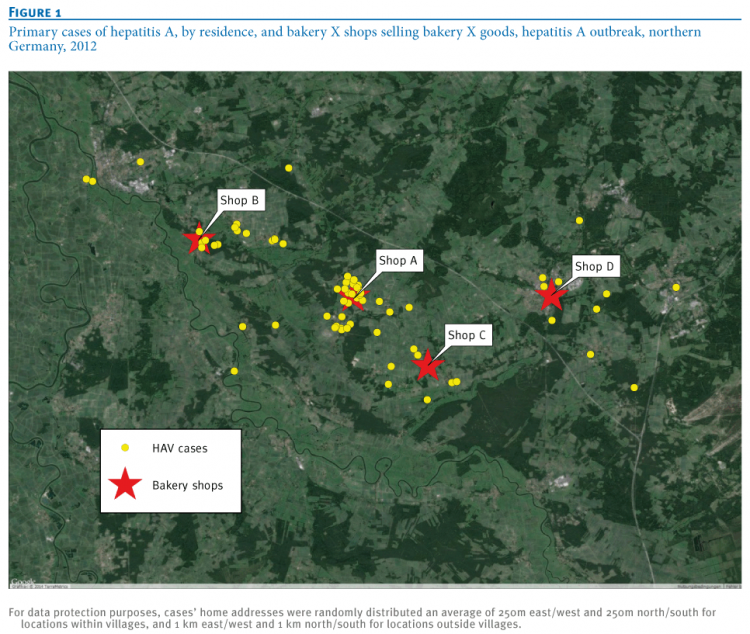Infected salesperson contaminated products in Hepatitis A outbreak

The Eurosurveillance report said 83 laboratory-confirmed cases were found in Lower Saxony with disease onsets between 8 October and 29 December 2012 (77 primary and six secondary cases).
It was the largest recorded HA outbreak since standardised surveillance started in the country in 2001.
Epidemiological and laboratory findings suggested that the salesperson contaminated products while packing and selling, said the report.
It remained unclear where the infected salesperson acquired the infection.
Hepatitis A Virus is transmitted by faecal-oral route, by direct contact with an infected person or by ingestion of HAV-contaminated food or water or from contaminated surfaces.
Sweet pastries source
Sweet pastries, apple cake and Bienenstich (a German cake typically made with a custard, buttercream or cream filling) were significantly associated with HAV infection in univariable models.
In a multivariable modelling approach adjusted for age and sex and other bakery products, only sweet pastries remained significant.
“A potential reason for sweet pastries being the vehicle of transmission could be the fact that those often are coated with fatty substances that help the virus to persist on the surface and maybe as well help to weather the acidic milieu of the stomach," said the report.
“Furthermore, inactivation of HAV requires heating foods to >85 degrees Celsius for at least one minute and sweet pastries are usually not fully baked or have unheated fillings or toppings.”
Researchers enrolled 50 primary cases and 52 controls matched for age and sex, and found that 82% of cases and 60% of controls had eaten products from a particular bakery.
Affected cases
Median age of the primary cases was 44 years (range: 4–77 years) and 78% were 18 years and older with 45% female.
Seven primary cases were visitors from different German districts during the possible period of infection (15 September–3 October 2012).
Three of these seven stayed for the weekend 22–23 September 2012, two more spent a holiday from 15 to 29 September 2012 and two worked there regularly but lived in other districts.
The outbreak investigation revealed two people having HAV infection with an earlier disease onset than the primary cases with one being a bakery employee.
This person was not involved in preparing products but sold products in two shops and packed them in two others.
Viral isolates from five selected cases and three positively tested surfaces in the bakery had identical nucleotide sequences. One additional identical isolate from a salesperson suffering from a chronic disease required immunosuppressive treatment.
The salesperson suffered from an underlying condition that may prolong shedding of the virus, said the report.
Overall, 129 swabs were taken from surfaces and HAV RNA was detected by PCR in four swabs from two bakery shops, analyses of food items were not done as no leftover samples were available.
Researchers recommended the supervised use of disinfectants and gloves for food handlers.
“It may be possible to avoid similar outbreaks in the future by addressing the potential spread of HAV through food handlers and educating food handlers as well as their employer to recognise hepatitis A symptoms and to be aware that HAV has a long incubation period.”
Source: Eurosurveillance, Volume 19, Issue 50, 18 December 2014
“Foodborne Hepatitis A outbreak associated with bakery products in Northern Germany, 2012”
Authors: M Harries, M Monazahian, J Wenzel, W Jilg, M Weber, J Ehlers, J Dreesman, E Mertens






